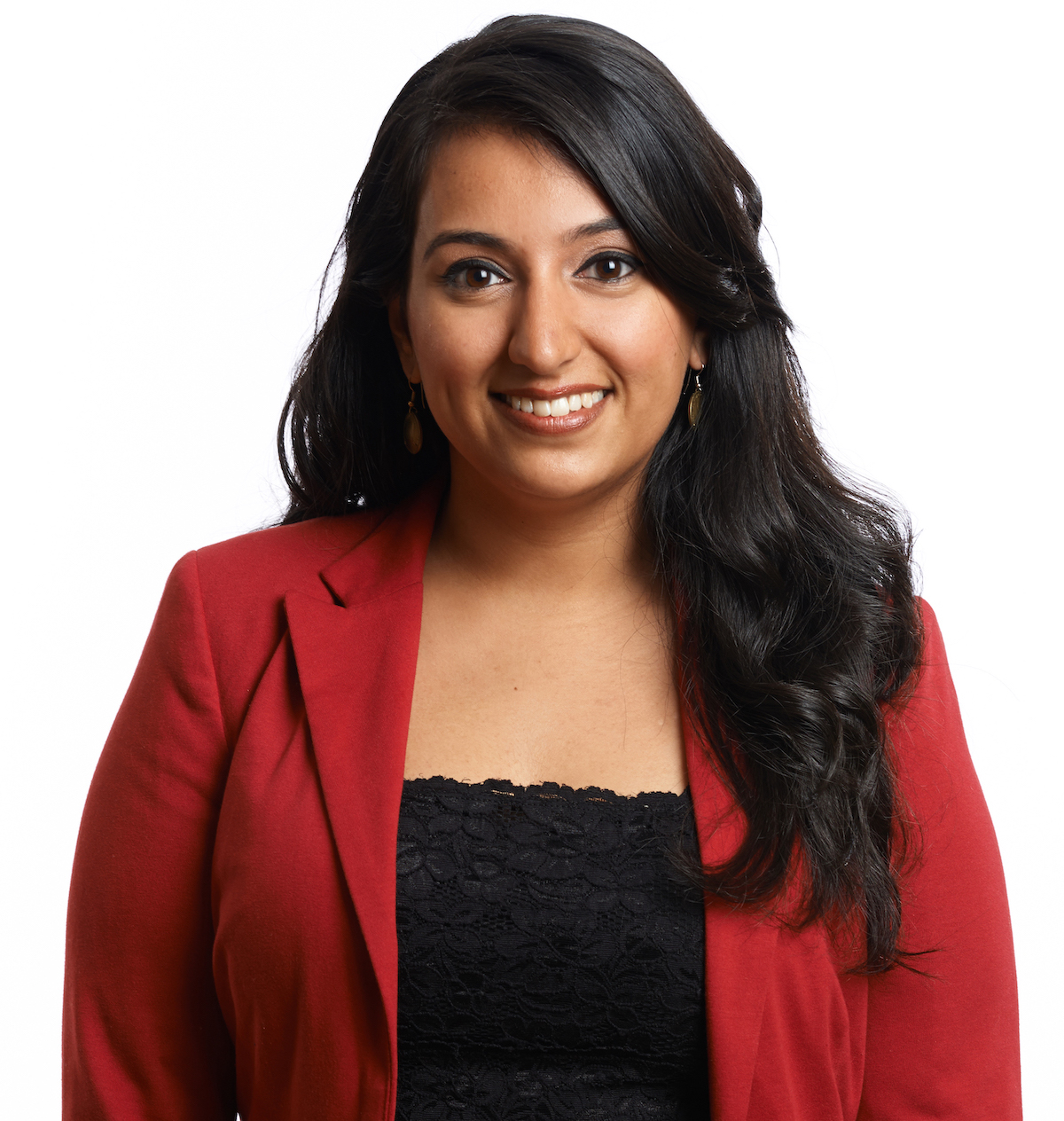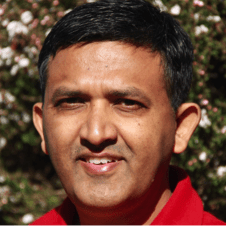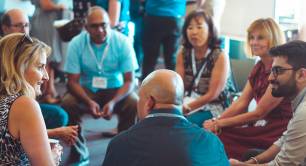Mushrooms and ‘mamapreneurs’: how data makes a difference
How do you help rice farmers in Vietnam become climate-resilient? How do you boost the life chances of toddlers in Kenya? It’s complicated – but a solid impact management system is a healthy start, as the experience of social enterprises Fargreen and Kidogo shows.
In theory, every social impact organisation has a good understanding of the difference it makes. In practice, that’s not the case. Even regularly gathering information is hard, says Dolly Parikh, a consultant who mentors ventures through a programme run by the Miller Center for Social Entrepreneurship and Sopact.
“Putting people into the field to collect data is the last priority a lot of the time, unless they are going for a grant that requires them to do so,” she says.
Putting people into the field to collect data is the last priority a lot of the time
That’s just one challenge. Early-stage social ventures typically need to be “handheld” throughout the process, Parikh says. “They’re changemakers. They know what problem they’re going to address. But they do not have a very formal way of defining the vision, mission, and how that is tied to the theory of change and thus the impact metrics.”
- Read: Data-driven, deal-ready: partners aim high with impact management programme for 300 social ventures
Parikh (pictured) advises clients to see impact metrics as useful for three things: reporting; compliance or alignment with broader frameworks (such as the Sustainable Development Goals or a national government agenda); and “operational efficiency”. The latter is core to what many now term impact management – identifying the positive and negative impacts that an enterprise has on people and the planet, and then reducing the negative and increasing the positive.
But how realistic is this?
In their first few years, social ventures are still in pilot mode; they probably don’t have enough data to undertake impact management, says Parikh. But informally there’s still “so much learning” to guide next steps. And a clear vision, mission and theory of change at this point helps leaders to stay focused on where to allocate resources – and to resist the distractions of shiny new ideas.
“Super-specific”
The experience at Fargreen, a social enterprise founded in 2015 to support sustainable and climate-resilient farming communities in Vietnam, backs this up. Since joining an accelerator programme at the Miller Center, Fargreen has developed baseline data and a theory of change based on now widely agreed five dimensions of impact: who, what, how much, enterprise contribution and risk.
 For Fargreen founder and “chief enabling officer” Trang Tran (pictured), the process has helped them move from “furry terms” to being “super-specific” about what they are working towards.
For Fargreen founder and “chief enabling officer” Trang Tran (pictured), the process has helped them move from “furry terms” to being “super-specific” about what they are working towards.
The social enterprise provides resources to (mainly female) rice farmers to help them apply green agriculture techniques, diversify their income through mushrooms, beekeeping and other crops, and to share knowledge with other farmers. A focus on how change is happening helped Fargreen come up with indicators such as the number and percentage of female managers; a focus on how much change is happening led to indicators such as the number and percentage of smallholder farmers reporting increased agricultural yields. An impact dashboard – built with the help of the team at Sopact and Miller Center students – is used in conversations with prospective investors and for internal decision-making.
Lorraine Baluran, Fargreen’s sustainability team lead, says the enterprise is still very new to impact management. But, she says, a clear vision means that “the ‘why’ is also very clear – so the ‘how to do it’ is a lot easier.” This not only builds a company’s credibility; listening to that data tells you whether your approach and activities are sustainable, she says.
Kidogo, which runs a network of affordable childcare centres in low-income areas of east Africa, is growing rapidly: the number of centres multiplied ten-fold from 2020 to 2021, now reaching around 11,000 children to become the largest childcare provider in Kenya, according to the enterprise. Kidogo runs a social franchise – its centres are managed by what it calls ‘mamapreneurs’ – so keeping tabs on quality of delivery is key.
“Our data needs became quite chaotic,” says co-founder and CEO Sabrina Habib. Keen to address this, she signed her team up for a Miller Center programme earlier this year, which has helped the social enterprise to improve its systems.
Kidogo collects data on things like centre facilities, child development and parent engagement. Data is cleaned up and scored green, yellow or red according to whether it meets Kidogo standards, and reports are shared with relevant departments to deal with as needed. Data is also entered into a centralised dashboard, which forms the first agenda item at the company’s monthly manager meetings.
Above: Kidogo has grown rapidly since 2014 (source: Kidogo annual report)
As well as using this information to track progress at individual centre level, analysts also look at trends, Habib says. For example, they recently discovered that handwashing has plummeted, possibly due to higher water prices. Though they’re still figuring out what to do about this, Faith Nzama, monitoring and evaluation assistant, says it’s a good example of how effective Kidogo’s management system is. It brings to light issues that are “complex and difficult to talk about”, she says.
Knee-deep in data
 Kidogo was founded in 2013, and Habib (pictured) agrees that getting solid systems in place before their rapid scale-up phase would have been ideal. But coming to the accelerator programme at this stage – while “knee-deep in data” – had the advantage of asking better questions and being better positioned to apply lessons learned.
Kidogo was founded in 2013, and Habib (pictured) agrees that getting solid systems in place before their rapid scale-up phase would have been ideal. But coming to the accelerator programme at this stage – while “knee-deep in data” – had the advantage of asking better questions and being better positioned to apply lessons learned.
There are several benefits of an “evidence-based culture”, which Habib says is her ultimate goal. Previously, different departments collected and analysed data separately, creating several “sources of truth”. Even something apparently simple, like the total number of children involved, was unclear: attendance, monitoring and food distribution records did not always match. This has changed, she says. “The conversation has moved from ‘This is incorrect’, to ‘Okay, how do we learn from this?’”
Above: Kidogo now reaches around 11,000 children, and is the largest childcare provider in Kenya
Evidence is also guiding Kidogo’s expansion strategy, as it prepares to launch in countries outside its base in Kenya. Though it’s still “very much up in the air” as to how its approach will translate elsewhere, the social enterprise has gleaned useful insights: for example, they know that the model works well in high-density urban areas where women are in employment and family support structures are lacking.
Better data makes communicating decisions easier, says Habib. For Kidogo’s first few years, it ran some childcare centres directly. Discovering this cost them 10 times more than running them via a franchise led them to focus fully on the latter. In this case, the data both led to a change of core strategy, and helped the CEO to explain that decision.
The conversation has moved from ‘This is incorrect’, to ‘Okay, how do we learn from this?’
Fargreen also uses data to communicate with beneficiaries. Farmers in Vietnam tend to rely on what they’ve learned from previous generations – and on well-honed instinct, says Tran. But modern data methods can help farmers better understand factors (such as soil health or weather patterns) that affect crop yields, ultimately boosting their resilience. “That’s the sort of discipline that we want to apply not just to us, but also for our farmer partners,” she says. The goal is to train farmers themselves to collect and analyse data from other farms in Fargreen’s network.
Above: Fargreen helps mainly women rice farmers in Vietnam to apply green agriculture techniques, diversify their income and share knowledge with other farmers
A better language
For Tran, impact management is less about securing funding, more about creating an “internal compass”. Parikh points out that this can also be useful when talking to funders: a clearer focus means you’ll “have a better language and a better reason for your ask”, she says.
Kidogo has two types of grant funders: those with a focus on early childhood, and sector-agnostic funders that support high-impact social enterprises of all kinds. The former want detailed evidence of the children’s development; the latter want rapid scaling and just a single metric that signals quality of delivery.
Now that we're a bit bigger and a bit more successful, we can be a bit sterner about what's important to us, and advocate for it
“We sit at the intersection trying to satisfy them both,” says Habib. “Now that we're a bit bigger and a bit more successful, we can be a bit sterner about what's important to us, and advocate for it.”
 Unmesh Sheth (pictured), co-founder at Sopact, which provides impact management training and tools to Miller Center participants, suggests Kidogo’s earlier challenges are widespread. Typically investors demand certain metrics from an investee without actually understanding what is most important to the stakeholder, he says. “That’s simply not acceptable in my view.”
Unmesh Sheth (pictured), co-founder at Sopact, which provides impact management training and tools to Miller Center participants, suggests Kidogo’s earlier challenges are widespread. Typically investors demand certain metrics from an investee without actually understanding what is most important to the stakeholder, he says. “That’s simply not acceptable in my view.”
Sheth says impact management is dominated by “funder-centric behaviour” – but believes the support provided by Miller Center and Sopact can start challenging this. “Ultimately it’s a powerful tool for entrepreneurs to push back – to say, ‘we understand what is more important, track us based on that rather than coming up with arbitrary metrics that are not super-relevant’”.
Growing pains
There are other complexities in impact management. Both Fargreen and Kidogo emphasise that they’re at the start of a long journey; genuine changes in soil health, or a child’s longer-term development can only be ascertained after many years. Fargreen encourages farmers to stop the practice of burning rice straw (a byproduct of rice crops), which causes pollution – but behaviour change isn’t easy to capture. In the meantime, accuracy is not always guaranteed: Kidogo’s mamapreneurs may under-report their income, in the hope of getting more support, says Habib. And figuring out what data to collect, and how to do it cost-efficiently and without overly interfering with operations – these are not one-off decisions, but ones that likely need to be frequently revisited as an organisation grows.
Methods and approaches may evolve too. For Kidogo, qualitative data – stories from the field – are even more important to motivate head office staff as they inevitably become further removed from the children, says Habib.
Fargreen currently collects data from farmers manually and face-to-face – a big positive, Baluran says, as this helps to build strong relationships. (Technology might be a means to support data collection as the enterprise grows, but will not completely replace human-led site visits, she says.) The ultimate goal is to “democratise” the process, with farmers learning from each other as an “alliance of climate-resilient farmers”, and Fargreen staff and its farmer partners learning together.
Fargreen and Kidogo may be more ambitious than many others when it comes to impact management. But Parikh wonders if we’re asking too much of any social startup to lead in this field – particularly when even very large, well-resourced organisations aren’t managing their impact successfully. She is not the only one concerned about this. Taking action as a result of gathering impact data still happens so rarely that Social Value International, a network of 25 impact management organisations worldwide, recently updated its seven principles for social value accounting to include an eighth principle – explicitly asking users to ‘be responsive’.
But Sheth says social enterprises are already proving that evidence can lead to action – not because the systems are so sophisticated, but because they’re simple. By helping organisations ask fewer questions – but more effective ones and more often – stakeholder feedback is faster.
“That lightweight approach can help them rethink,” he says. “It’s not complex to do.”
Photos courtesy of interviewees
This article was produced in partnership with Sopact. Find out more about how Sopact helps organisations to implement an end-to-end impact measurement and management process.




